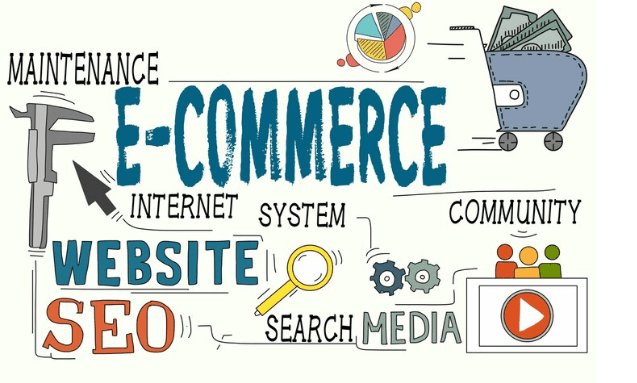Boost Customer Engagement with Cutting-Edge Chatbot Application Development Solutions
Chatbot application development is the process of creating and implementing software programs that can simulate human conversation through text or voice interactions. These chatbots are designed to understand and respond to user queries, provide information, and perform tasks based on predefined rules or artificial intelligence algorithms. The development of chatbot applications involves various stages, including planning, design, development, testing, and deployment.
In the planning phase, developers need to identify the purpose and goals of the chatbot, define its target audience, and determine the platform and technology stack to be used. During the design phase, the user interface, conversation flow, and integration with external systems or APIs are planned. The development phase involves coding the chatbot logic, implementing natural language processing (NLP) algorithms, and integrating with backend systems. Testing and deployment involve ensuring the chatbot functions as intended and making it available to users through various channels such as websites, messaging platforms, or mobile apps.
Chatbot application development requires a deep understanding of user behavior, language processing, and software engineering principles. Developers need to consider factors such as user experience, scalability, security, and performance while building chatbot applications to ensure they meet the needs of both businesses and end-users.
Choosing the Right Platform for Chatbot Development
When it comes to choosing the right platform for chatbot development, developers have several options to consider. The choice of platform depends on factors such as the target audience, deployment channels, integration requirements, and development resources. Some popular platforms for chatbot development include Facebook Messenger, Slack, Microsoft Bot Framework, Google Dialogflow, Amazon Lex, and IBM Watson.
Each platform has its own set of features, tools, and APIs that developers can leverage to build and deploy chatbot applications. For example, Facebook Messenger provides a rich set of APIs for building chatbots that can interact with users on the popular messaging platform. Slack offers a platform for building chatbots that can automate tasks and provide information within the workplace collaboration tool. Microsoft Bot Framework provides a comprehensive set of tools for building chatbots that can be deployed across multiple channels such as Skype, Microsoft Teams, and Cortana.
Developers need to evaluate the features and capabilities of each platform to determine which one best suits their requirements. They also need to consider factors such as documentation, community support, pricing, and integration options when choosing a platform for chatbot development.
Implementing Natural Language Processing in Chatbot Development
Natural Language Processing (NLP) is a key component of chatbot development that enables chatbots to understand and respond to user queries in a human-like manner. NLP involves the use of machine learning algorithms and linguistic analysis to interpret and process natural language input from users. Implementing NLP in chatbot development requires developers to use tools and libraries such as NLTK (Natural Language Toolkit), spaCy, Stanford NLP, and Google Cloud Natural Language API.
Developers need to preprocess user input by tokenizing, stemming, and lemmatizing text to extract meaningful information. They also need to use techniques such as named entity recognition, part-of-speech tagging, and sentiment analysis to understand the context and intent of user queries. Machine learning models such as support vector machines, recurrent neural networks, and transformers can be used to train chatbots to understand and generate natural language responses.
Implementing NLP in chatbot development requires a deep understanding of linguistics, machine learning, and software engineering principles. Developers need to continuously improve and fine-tune NLP models based on user feedback and data to ensure chatbots can effectively understand and respond to user queries.
Integrating Chatbot with Existing Systems and Applications
Integrating chatbots with existing systems and applications is an important aspect of chatbot application development that enables chatbots to access data and perform tasks across different platforms. Chatbots can be integrated with backend systems such as CRM (Customer Relationship Management) systems, ERP (Enterprise Resource Planning) systems, databases, APIs, and third-party services to retrieve information and perform actions on behalf of users.
Developers need to use APIs and webhooks to connect chatbots with external systems and applications. They also need to implement authentication and authorization mechanisms to ensure secure access to data and services. Integration with existing systems requires developers to understand the data models, APIs, and business logic of the systems they are connecting with.
Integrating chatbots with existing systems and applications enables businesses to automate tasks, provide personalized experiences, and streamline communication with customers. It also allows chatbots to access real-time data and perform actions such as booking appointments, making reservations, processing payments, and retrieving information from backend systems.
Testing and Debugging Chatbot Applications
Testing and debugging are critical stages in chatbot application development that ensure chatbots function as intended and provide a seamless user experience. Developers need to perform various types of testing such as unit testing, integration testing, regression testing, and user acceptance testing to identify and fix issues in chatbot applications.
Unit testing involves testing individual components or modules of the chatbot logic to ensure they work correctly. Integration testing involves testing the interaction between different components of the chatbot application to ensure they work together seamlessly. Regression testing involves retesting the chatbot application after making changes or updates to ensure existing functionality is not affected. User acceptance testing involves getting feedback from real users to validate the chatbot’s performance and usability.
Developers need to use tools such as testing frameworks, simulators, emulators, and debugging tools to test and debug chatbot applications. They also need to monitor chatbot performance in production environments to identify and fix issues in real-time.
Testing and debugging chatbot applications require attention to detail, patience, and problem-solving skills. Developers need to continuously improve the quality of chatbot applications by identifying and fixing issues based on user feedback and usage data.
Enhancing User Experience with Chatbot Application Development
Enhancing user experience is a key goal of chatbot application development that involves designing intuitive interfaces, providing relevant information, and delivering personalized interactions. Developers need to focus on creating conversational interfaces that are easy to use and understand for users. They also need to provide clear guidance on how users can interact with the chatbot and what types of queries it can handle.
Personalization is another important aspect of enhancing user experience with chatbot applications. Developers need to use data-driven approaches such as user profiling, behavior analysis, and recommendation systems to provide personalized responses and recommendations to users. They also need to enable users to customize their preferences and settings within the chatbot interface.
Enhancing user experience with chatbot application development requires a deep understanding of user behavior, psychology, design principles, and human-computer interaction. Developers need to continuously iterate on the design and functionality of chatbot applications based on user feedback and usage data to ensure they meet the needs of users.
Future Trends in Chatbot Application Development
The future of chatbot application development is expected to be driven by advancements in artificial intelligence, machine learning, natural language processing, and conversational interfaces. Chatbots are expected to become more intelligent, context-aware, and capable of handling complex tasks through advancements in AI algorithms and NLP models.
Conversational interfaces are expected to become more natural and human-like through advancements in speech recognition, voice synthesis, and emotion detection technologies. Chatbots are expected to support multi-modal interactions across different channels such as voice assistants, messaging platforms, websites, mobile apps, and IoT devices.
Chatbots are also expected to become more integrated with existing systems and applications through advancements in API technologies, microservices architectures, and cloud computing platforms. This will enable chatbots to access real-time data from various sources and perform complex tasks such as processing transactions, analyzing data, and automating workflows.
The future of chatbot application development is also expected to be shaped by advancements in privacy, security, ethics, and regulations related to AI technologies. Developers will need to focus on building trustworthy and transparent chatbot applications that respect user privacy and comply with data protection regulations.
In conclusion, chatbot application development is a complex process that involves various stages such as planning, design, development, testing, deployment, integration, and enhancement. Developers need to consider factors such as user experience, natural language processing, integration with existing systems, testing and debugging while building chatbot applications. The future of chatbot application development is expected to be driven by advancements in AI technologies, conversational interfaces, integration with existing systems, privacy regulations, and ethical considerations. As technology continues to evolve, chatbots are expected to become more intelligent, natural, integrated with existing systems, secure, and compliant with regulations.



![How to Import PST to Zoho Mail Account? [Complete User Guide]](https://www.ranksrocket.com/wp-content/uploads/2025/02/Import-PST-to-Zoho-Mail-Account.jpg)









